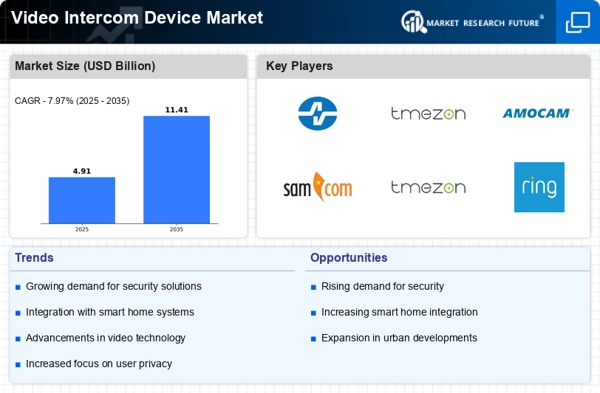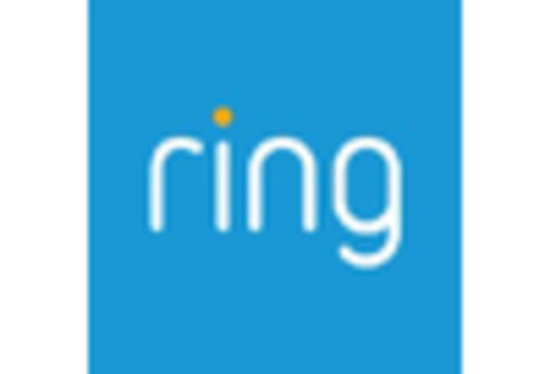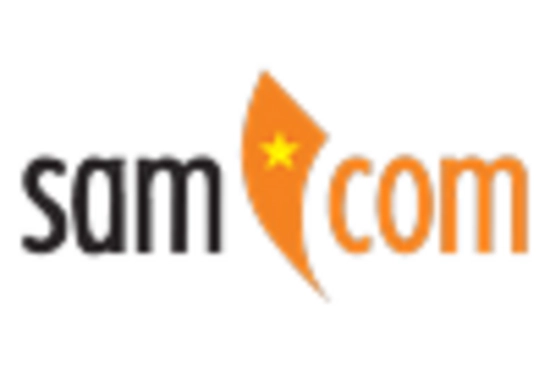The Video Intercom Device Market is currently characterized by a dynamic competitive landscape, driven by technological advancements and increasing consumer demand for enhanced security solutions. Key players such as Aiphone (Japan), TMEZON (US), and Ring (US) are strategically positioning themselves through innovation and partnerships. Aiphone (Japan) focuses on integrating advanced communication technologies into their products, enhancing user experience and security features. TMEZON (US) emphasizes digital transformation, offering cloud-based solutions that allow users to access their intercom systems remotely. Ring (US), known for its smart home integration, leverages its existing ecosystem to enhance its video intercom offerings, thereby creating a seamless user experience. Collectively, these strategies contribute to a competitive environment that prioritizes technological innovation and user-centric solutions.
In terms of business tactics, companies are increasingly localizing manufacturing to reduce costs and improve supply chain efficiency. This approach not only mitigates risks associated with The Video Intercom Device Market demands. The market structure appears moderately fragmented, with several players vying for market share, yet the influence of major companies remains substantial. Their collective actions shape pricing strategies and product offerings, creating a competitive atmosphere that encourages continuous improvement and innovation.
In August 2025, Aiphone (Japan) announced a partnership with a leading smart home technology provider to enhance its intercom systems with AI-driven features. This strategic move is likely to position Aiphone at the forefront of the market, as it integrates cutting-edge technology that appeals to tech-savvy consumers seeking advanced security solutions. The collaboration may also facilitate cross-promotion, expanding Aiphone's reach within the smart home ecosystem.
In September 2025, TMEZON (US) launched a new line of video intercom devices that incorporate solar power technology, aiming to cater to environmentally conscious consumers. This initiative not only aligns with global sustainability trends but also differentiates TMEZON's offerings in a crowded market. By focusing on eco-friendly solutions, TMEZON may attract a niche segment of consumers who prioritize sustainability in their purchasing decisions.
In October 2025, Ring (US) unveiled an upgraded version of its video intercom system, featuring enhanced video quality and improved integration with other smart home devices. This upgrade reflects Ring's commitment to maintaining its competitive edge through continuous product development. By enhancing the user experience and ensuring compatibility with a broader range of devices, Ring is likely to solidify its position as a leader in the smart home market.
As of October 2025, the competitive trends in the Video Intercom Device Market are increasingly defined by digitalization, sustainability, and the integration of artificial intelligence. Strategic alliances among companies are shaping the landscape, fostering innovation and collaboration. Looking ahead, it appears that competitive differentiation will evolve from traditional price-based competition to a focus on technological innovation, reliability in supply chains, and the ability to meet consumer demands for smart, sustainable solutions.
















Leave a Comment